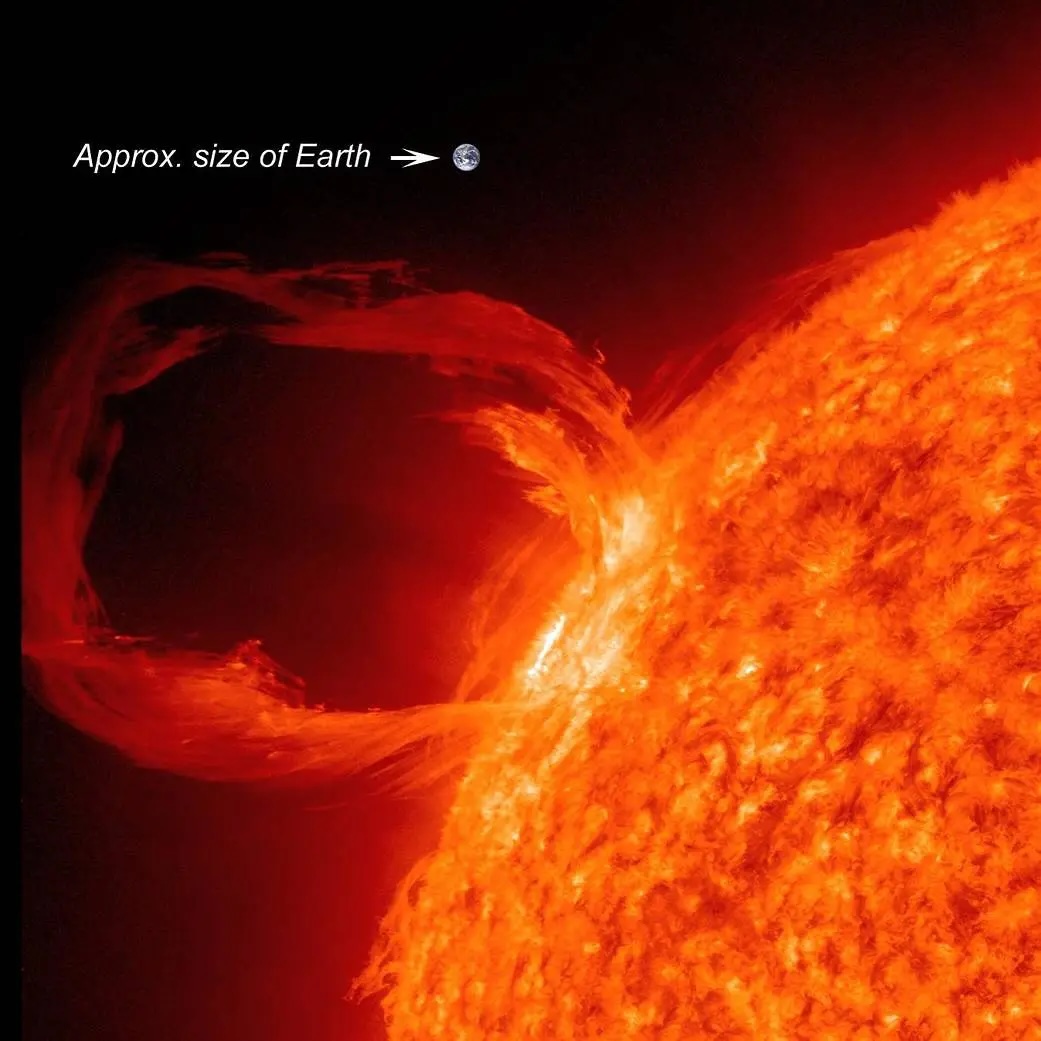The moon hovers over a shadowy void wreathed in sunlight in a stunning new photo taken by NASA’s Polarimeter to Unify the Corona and Heliosphere (PUNCH) mission on April 27.
PUNCH is a collection of four small satellites orbiting Earth with their instruments aimed at the sun. Launched on March 11, its goal is to study the solar wind — the stream of charged particles emanating from the sun and the cause of space weather. It will do so by taking pictures of the sun and the space between it and Earth.
To prepare for its science operations phase, PUNCH must go through commissioning — a phase of instrument testing and alignment. The image above was taken as part of the commissioning process. The dark, circular shadow is from the “occulter.” The occulter is needed to prevent the sun’s light from overwhelming the images, just like the moon blocks out the sun during a solar eclipse, revealing the delicate streamers and filaments that stretch from the sun’s surface into the corona, the sun’s outermost atmosphere.
The golden glow surrounding the sun is light reflecting off the occulter, and the dark areas at the top of the image are outside the instrument’s field of view. The moon is illuminated by light reflected off Earth. Images collected during the mission’s science operations will undergo more processing to remove the stray light and some small distortions left by contamination to reveal detailed images of the sun’s corona.
Related: The sun just spat out the strongest solar flares of 2025 — and more could be headed toward Earth
Photos of the sun’s corona can help scientists study the solar wind — the more than 300,000 tons (272,000 metric tons) of material the sun blasts into space every second at a million mph (1.6 million km/h), bathing the entire solar system in a feisty stew of charged particles. The solar wind is responsible for geomagnetic storms that, on Earth, can cause power grid failures and radio blackouts, and disrupt or damage satellites. Understanding the solar wind helps us prepare for geomagnetic storms so life on Earth can continue without disruption.

The photos PUNCH will take won’t directly show the sun’s volatile magnetic field. Instead, they’ll show massive, glowing plasma loops and outbursts that are shaped by it. Patterns in the streamers and filaments emanating from the sun help researchers map out regions that are connected to the extreme space weather that causes geomagnetic storms on Earth. When combined with data collected within the sun’s corona by the Parker Solar Probe (PSP), PUNCH’s science will enable a much deeper understanding of the processes that drive the solar wind. This knowledge, in turn, can help protect the planet from geomagnetic storms.
“PSP and PUNCH are both working to unite two separate branches of heliophysics into a unified whole,” PUNCH’s principal investigator, Craig DeForest, told Live Science in an email. “PSP is carrying the techniques of space physics (in-situ sampling) inward to touch and measure the solar corona. PUNCH is extending the techniques of solar physics (scientific imaging) outward to measure how the solar corona touches us. The two missions complement each other beautifully.”
PUNCH is scheduled to complete its commissioning phase June 9 and will start collecting new images of the sun and the area around it continuously. The data collected will be available to anyone who wishes to access it as part of PUNCH’s commitment to open, inclusive science.
